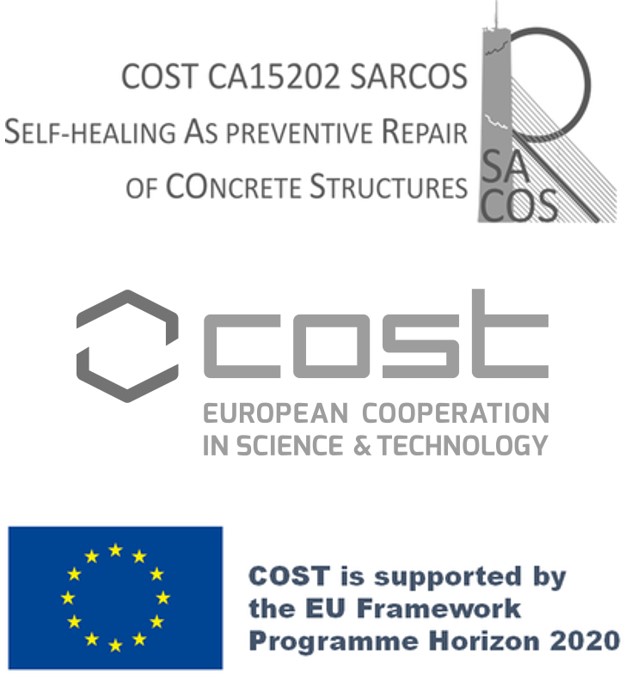
About SARCOS
Our Action (CA15202), Self-healing As preventive Repair of COncrete Structures, started on 30 September 2016 and will last until 29 September 2020.
Overview
- Self-healing of cement-based construction materials represents a valuable and cutting edge asset because of their inborn capacity to repair damages once they occur.
- External repair methods based on incorporating “healing promoter additives”, compatible with the existing cementitious substrate, are also innovative solutions beyond the know-how for the repair and rehabilitation of the existing building and infrastructures’ stock.
- These preventive repair solutions aim at extending the service life of structures and infrastructures without lost of performance.
- SARCOS Action deals with these new concepts and advanced solutions, from the design of smart “healing promoter additives” to the standards definition for performance evaluation, involving a breakthrough scientific research.
Objective
About COST
COST (European Cooperation in Science and Technology) is a pan-European intergovernmental framework. Its mission is to enable break-through scientific and technological developments leading to new concepts and products and thereby contribute to strengthening Europe’s research and innovation capacities. It allows researchers, engineers and scholars to jointly develop their own ideas and take new initiatives across all fields of science and technology, while promoting multi- and interdisciplinary approaches. COST aims at fostering a better integration of less research intensive countries to the knowledge hubs of the European Research Area. The COST Association, an International not-for-profit Association under Belgian Law, integrates all management, governing and administrative functions necessary for the operation of the
framework. The COST Association has currently 36 Member Countries.
COST funding is based on Actions, which are networks of coordinated collaborations, to address the specialized issues being set forth by the Action. Action participants come from COST and non-COST countries. The Actions are led by a Memorandum of Understanding signed by the governments of the COST countries participating in the Action. The initiative within the Action comes from the scientists, technical experts and from those with a direct interest in furthering international collaboration.
See our .


